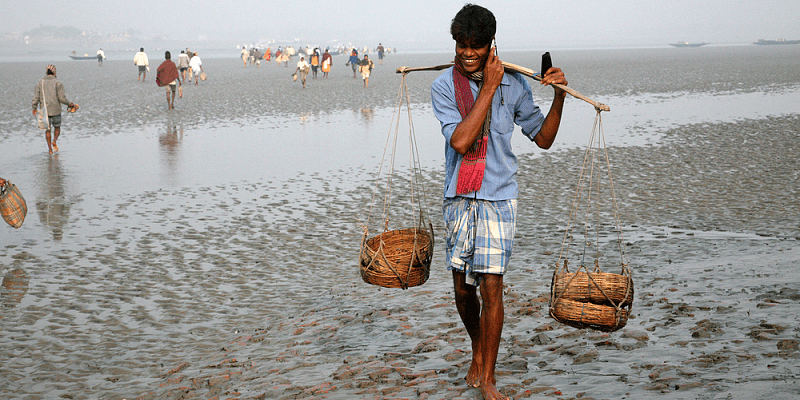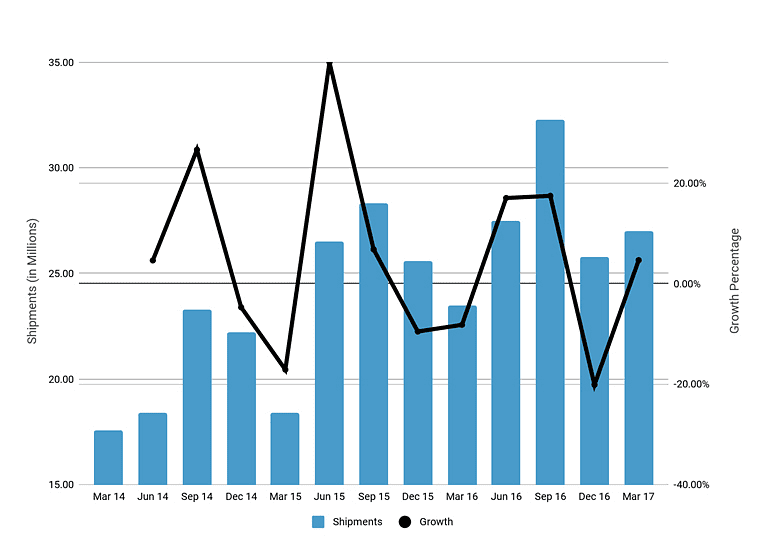What will it take for India to be a true mobile-base economy?
2017-06-19The Indian mobile internet ecosystem has grown a lot recently, but we are still far away from being a mobile-based economy.
This post originally was written by me on YourStory

Image: Shutterstock
A few years ago, someone told me that India is a massive market where two opposing ideas can co-exist. Every year, this rings true whenever I hear conversation points like,
- In India, you have all sorts of brands flourishing, from Apple to Patanjali, and more importantly, everyone is growing.
- We will soon cross the US in the number of internet users, but the internet is not yet available to three-fourth of the country.
- We are the top consumers of apps on Google Play, we spend the most time on apps, yet we hardly make one to two percent of Google's revenue (FY15-16).
- India is a country where both digital and non-digital mediums are growing. Print is growing, and so is mobile internet. Flipkart is growing, so is the Future Group (even after selling Pantaloons).
The Indian mobile internet ecosystem has grown a lot recently, and yet we are still far away from being a mobile-based economy. In fact, we should be a little weary of the recent growth. To double or even triple from here, we need to do a lot more than give away free data.
Where are we now?
- Mobile internet has grown in the last three-quarters due to Jio, which now is the largest provider of mobile internet and holds 42 percent market share.
- Jio now has more than 100M data subscribers.
(Data from TRAI reports)
Here is how India is doing vis-à-vis mobile internet

Overall:
- 90+% penetration of mobile phone
- What is interesting is, both rural and urban adoption of mobiles is growing at the same rate, thus the percentage split has remained constant.
- Mobile has been the main mode of accessing the internet. It grew from 72 percent in December 2013 to 92 percent in February 2017.
- The percentage of users consuming data has also been steadily increasing, but its growth rate has been inconsistent. Sadly, three out of four individuals don't use data on their phone yet.

We need to be wary of short-term growth metrics
- To a large extent, we have solved a bunch of problems for the urban Indian. You can book a cab, order food, your meds, discontinue your cable connection or get a HotStar connection, use PayTM and other finance apps to pay a bunch of bills or recharge all on your smartphone.
- What we have not solved are the problems of the next 500 million usersThey don't need Hotstar.
- They don't need a cab on a regular basis.
- They don't need to order coffee or tea at random points in the day.
- The next 500 million are not primary English users hence most of the current constructs won't work, like app store search or app store descriptions.
- The monthly shoppers of Flipkart and the MAUs of Facebook + Whatsapp do show the difference in this divide. Flipkart has under 10 million monthly buyers whereas WhatsApp has more than 200 million MAUs. That being said, Facebook earns just Rs 9 per user from India.
The need for more hardware
Shipments of smartphones have not shown consistent growth. Growth is steadily declining, and one way I look at it is those who could buy a smartphone did, the rest are waiting for their purchasing power to increase. With that being the case, mobile internet is bound to plateau again given the fact that around 300 million smartphones have been shipped to India in the last four years.

What happens from here?
Startups in India and other emerging markets have pitched the mobile as a primary screen. This is true, the mobile is the first computer many Indians experience, but the job the mobile is doing for them is not the same as a PC. The mobile is going to be a more intimate and important device for them.
With all this happening, the current and next Unicorns need to address the education problem. People need to know how to use smartphones and how to use the operating systems. They need to know how to use the combination of the mobile phone and the internet to simplify their life and make them more productive. Since many have not used a computer ever, they don't know many of the human-computer interface paradigms. It is not hard to see a future where people don't know that an “X" button can close something like a “window". Even the concept of “closing" an app may be farfetched.
Technology may well need to simplify itself for the next billion worldwide. Like what WeChat has done with QR codes for payments, it has removed all the cognitive load for payments, you don't need to know a card number, CVV, and one-time passcode etc. Just scan and get it done.
One can argue that the Snapchat spectacles are actually the simplest video recording devices on earth. Just one button, using our own eyes as a viewfinder (the challenging part is using Snapchat). A lot of the initial work on getting the next 500 million Indians may well have to be done by the government, who will have to get the basic services on to the mobile ecosystem in the cheapest, most efficient way. Probably have a ‘mobile version' of the ‘cyber cafes' to make mobile services more accessible to others. We might need to change the paradigm of mobile being a personal device.
The next Unicorns will also need to innovate on new viable business models as the purchasing power of the next 500 million won't increase overnight.
Ads won't work for the next 500 million as they will not have the same purchasing power as the first 300 million folks. As long as the cost of acquisition via ads is more than the lifetime value, trying to acquire such users won't make sense. They won't be spending as much as the first 300 million. Increasing revenues from the current user base will just get harder as time goes on.
Indian startups need to start focusing on growing the pie, rather than profiting from the current pie. India has a long way to go to be a digital behemoth. This is more important for the next large startups as they won't be trying to compete with the current incumbents on the incumbent's playing field.